Overview
The foundation of our supergraph is complete. We've separated FlyBy's schema into location data and review data, and we've implemented subgraphs that only define the types they're concerned with.
Revisiting our schema agreement checklist, we still have three fields that we don't know how to implement yet:
Location.reviewsForLocationandLocation.overallRating: These are both fields of theLocationtype, but we decided we want them to be owned by thereviewssubgraph.Review.location: This is a field on theReviewtype (which lives in thereviewssubgraph), but the field has a return type ofLocation, which is defined in thelocationssubgraph.
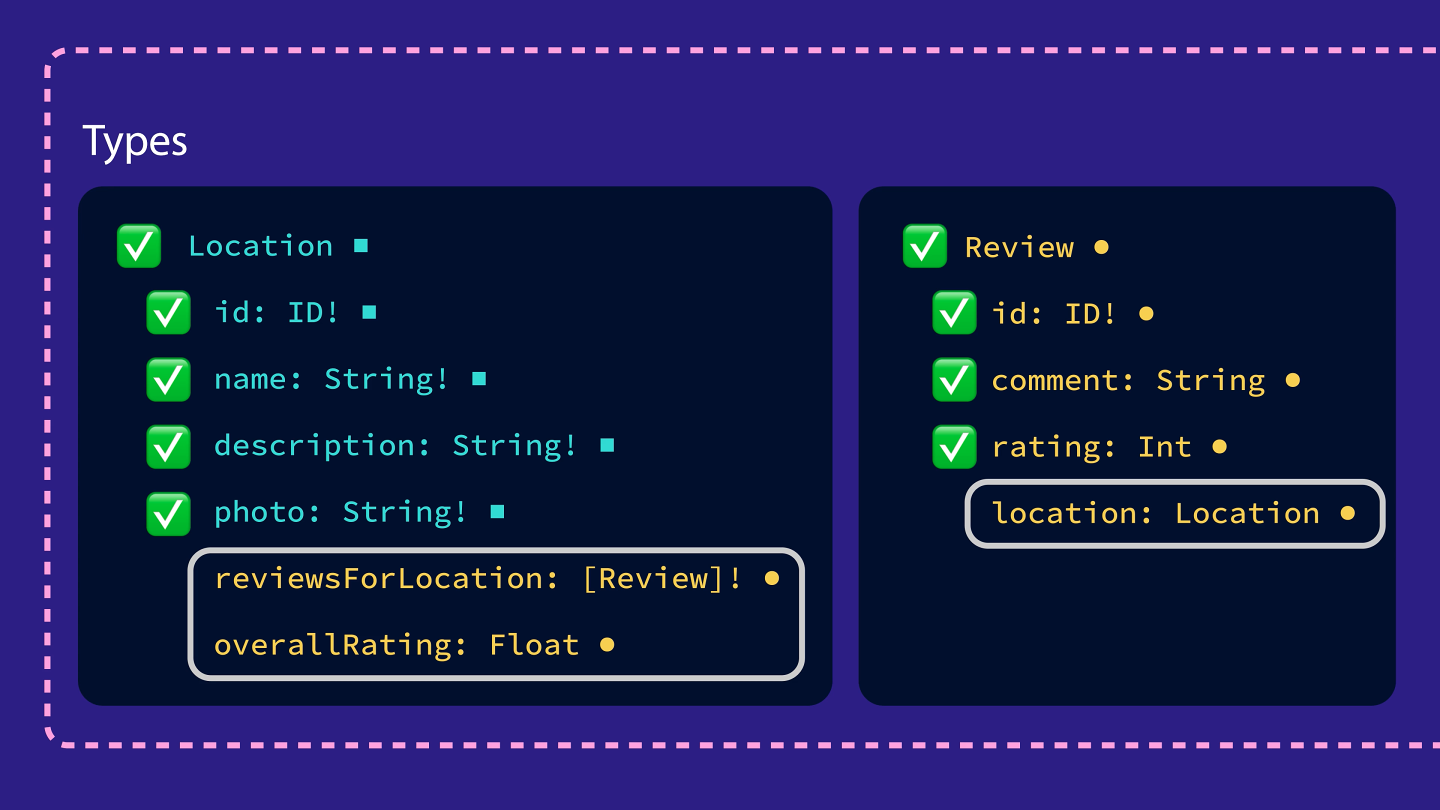
To implement these fields, we need to add a new tool to our developer tool belts: entities!
In this lesson, we will:
- Learn what an entity is and what it's used for
- Learn how to define an entity
- Learn how the router represents entities when it talks between subgraphs
What's an entity?
An entity is an object type with fields split between multiple subgraphs.
This means we can define a type that both of our subgraphs can contribute fields to and resolve independently.
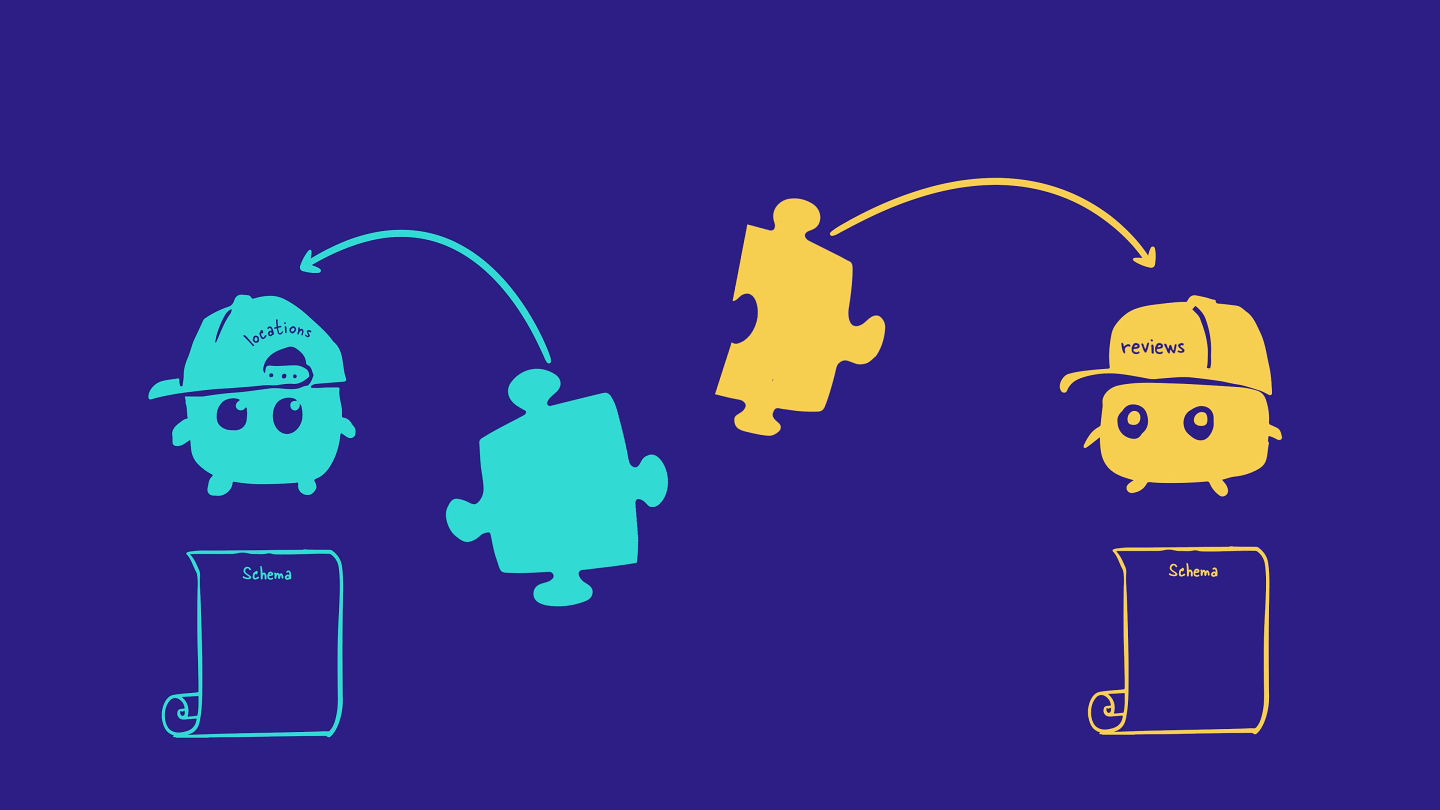
In FlyBy, we want our reviews to include the location that they are written about. Our Location type needs to be used by both subgraphs, so we'll be turning the Location type into an entity.
A subgraph that defines an entity can do one or both of the following:
- Reference the entity
- Contribute fields to the entity
Reference the entity
Referencing an entity means using it as a return type for another field defined in the subgraph.
For example, in the reviews subgraph, we can add a location field to the Review type, which will reference the Location entity as its return type.
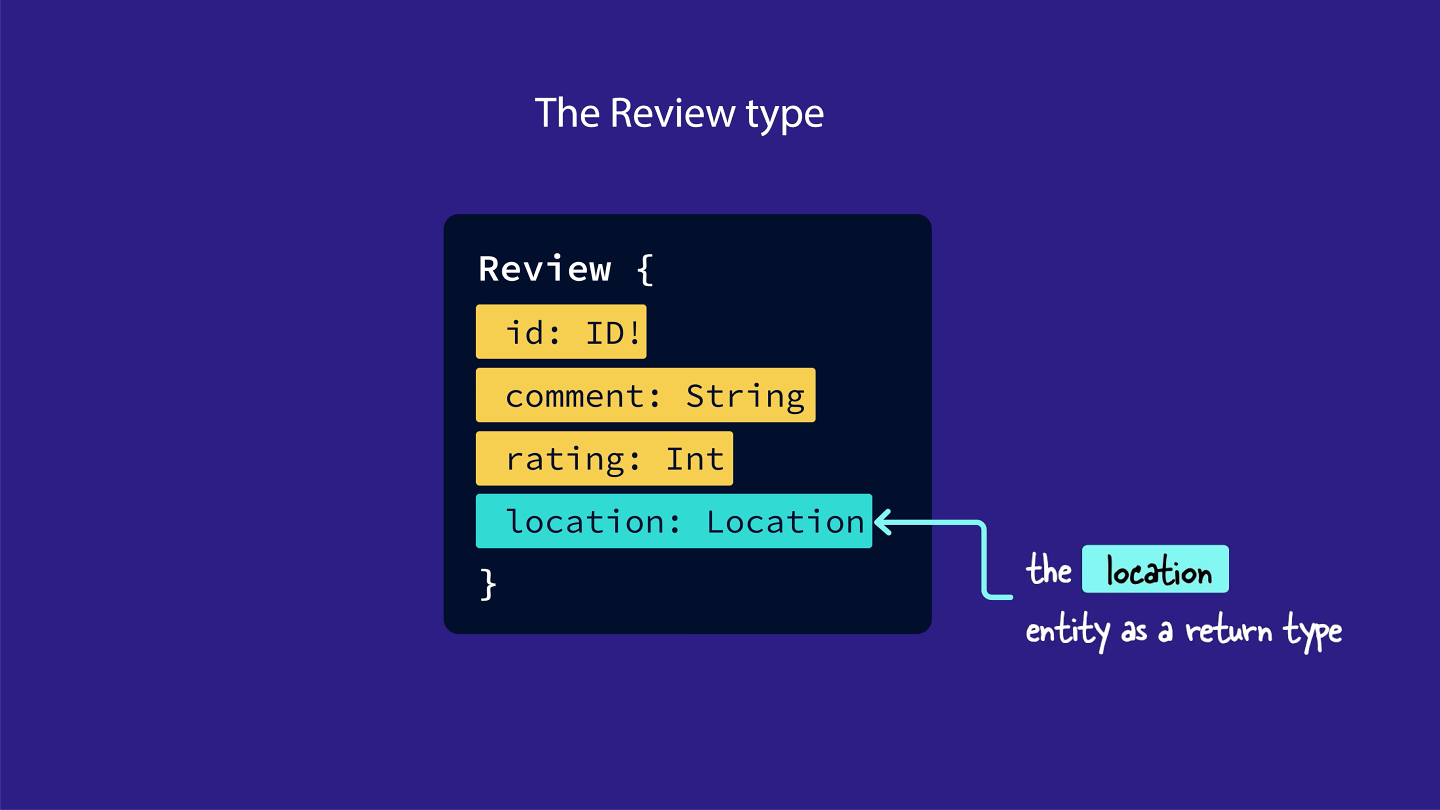
Contribute fields to the entity
Contributing fields to an entity means that one subgraph adds new fields to an entity that are specific to that subgraph's concerns.
For example, the Location entity will have fields for name, description, and photo, which will live in the locations subgraph. In other words, the locations subgraph contributes these fields to the Location entity.
And the reviews subgraph contributes two review-specific fields to the Location entity: reviewsForLocation and overallRating.
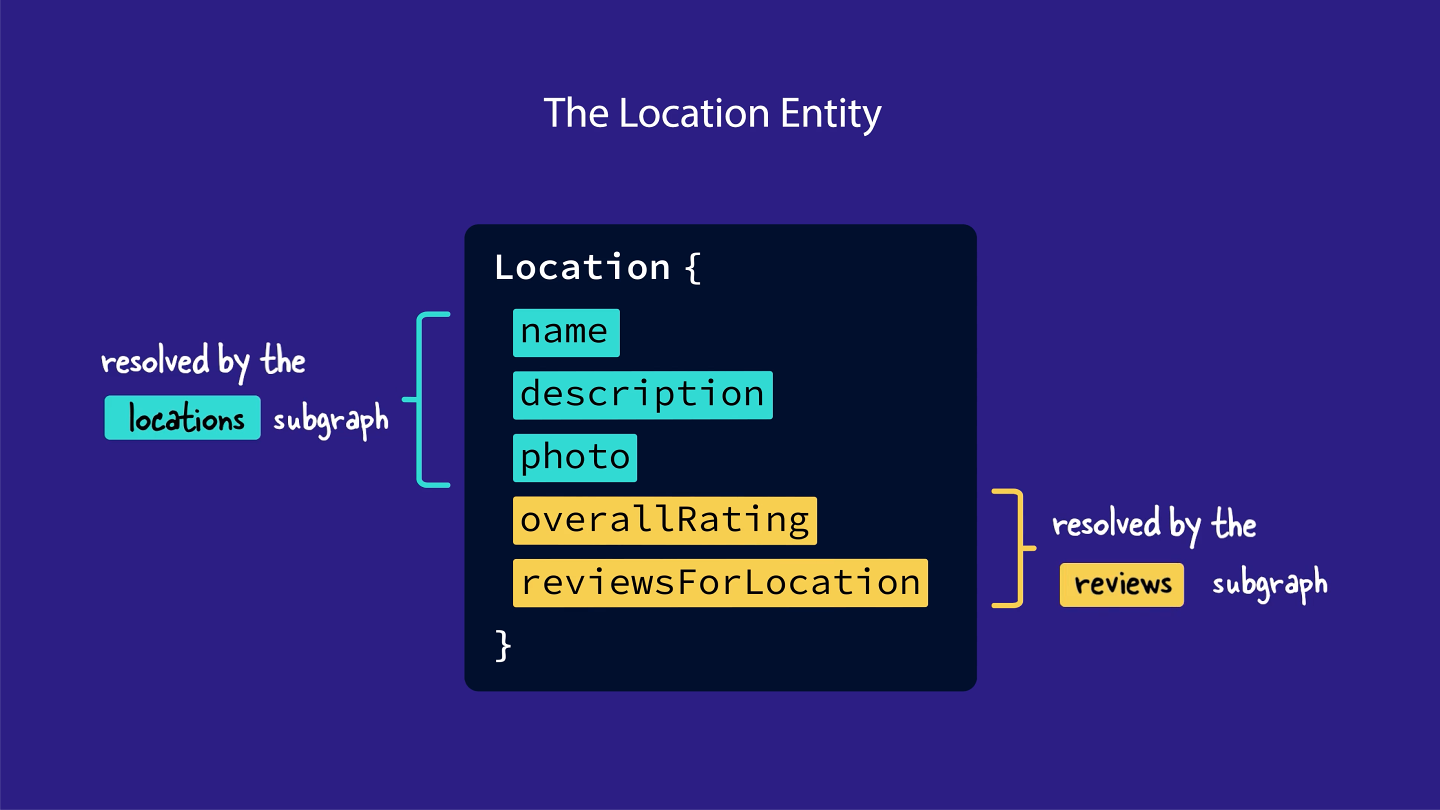
How to create an entity
To convert an object into an entity in the subgraph schema, we need to do two things:
- Define a primary key
- Define a reference resolver
Defining a primary key
An entity's primary key is the field (or fields) that can uniquely identify an instance of that entity within a subgraph. The router uses primary keys to collect data from across multiple subgraphs and associate it with a single entity instance.
For example, a location entity's primary key is its id. The router uses that id to collect data about a specific location instance, like a location with id "loc-1".
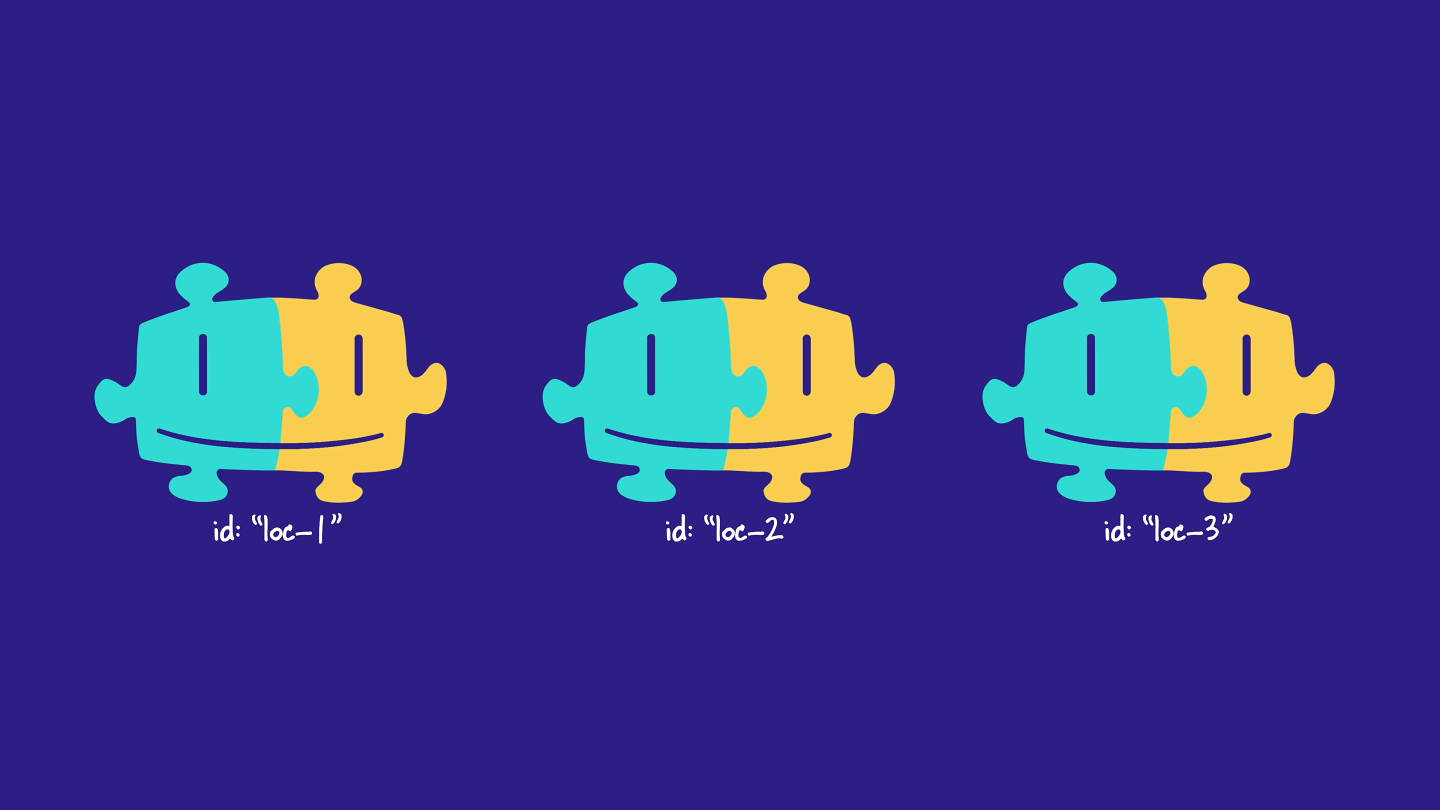
In each of our subgraph schemas, we can define a primary key for an entity, by adding the @key directive after the type's name.
The @key directive needs a property called fields, which we'll set to the field we want to use as the entity's primary key.
type EntityType @key(fields: "id") {id: ID!}
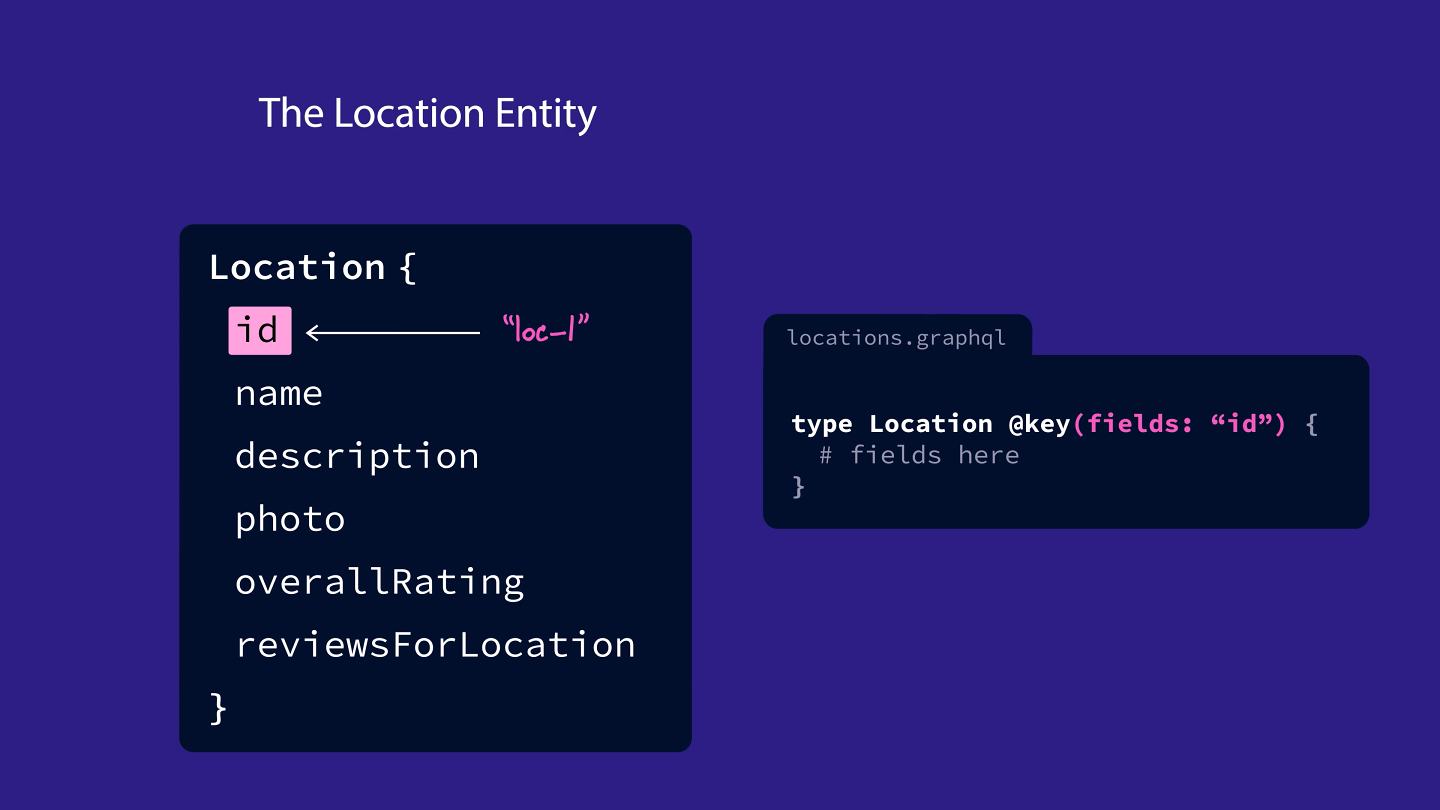
Defining a reference resolver function
Each subgraph that contributes fields to an entity also needs to define a special resolver function for that entity called a reference resolver. The router uses reference resolvers to directly access the entity fields that each subgraph contributes.
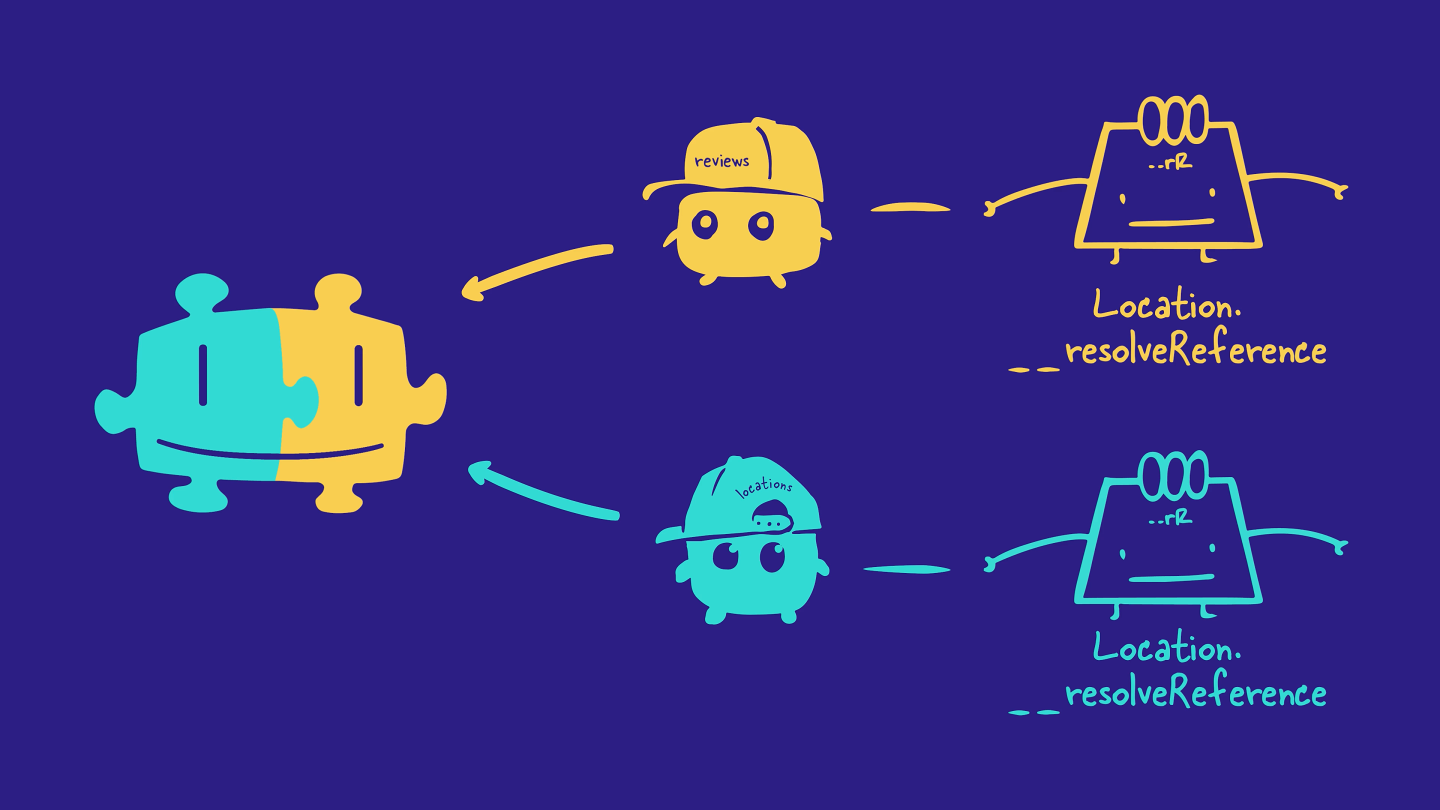
Every reference resolver has the name: __resolveReference. We define each entity's reference resolver right alongside all the field resolvers for that type.
The __resolveReference function has a slightly different signature from other resolver functions. Instead of the usual four arguments, __resolveReference only takes three:
reference: The entity representation object that's passed in by the router. This tells the subgraph which instance of an entity is being requested. We'll cover what an entity representation is in the section below.context: The object shared across all resolvers. (This is the same as in normal resolvers, but note that by convention, we refer to this__resolveReferenceargument ascontext, rather thancontextValueas in other resolvers!)info: Contains information about the operation's execution state, just like in a normal resolver. We won't use this argument much.
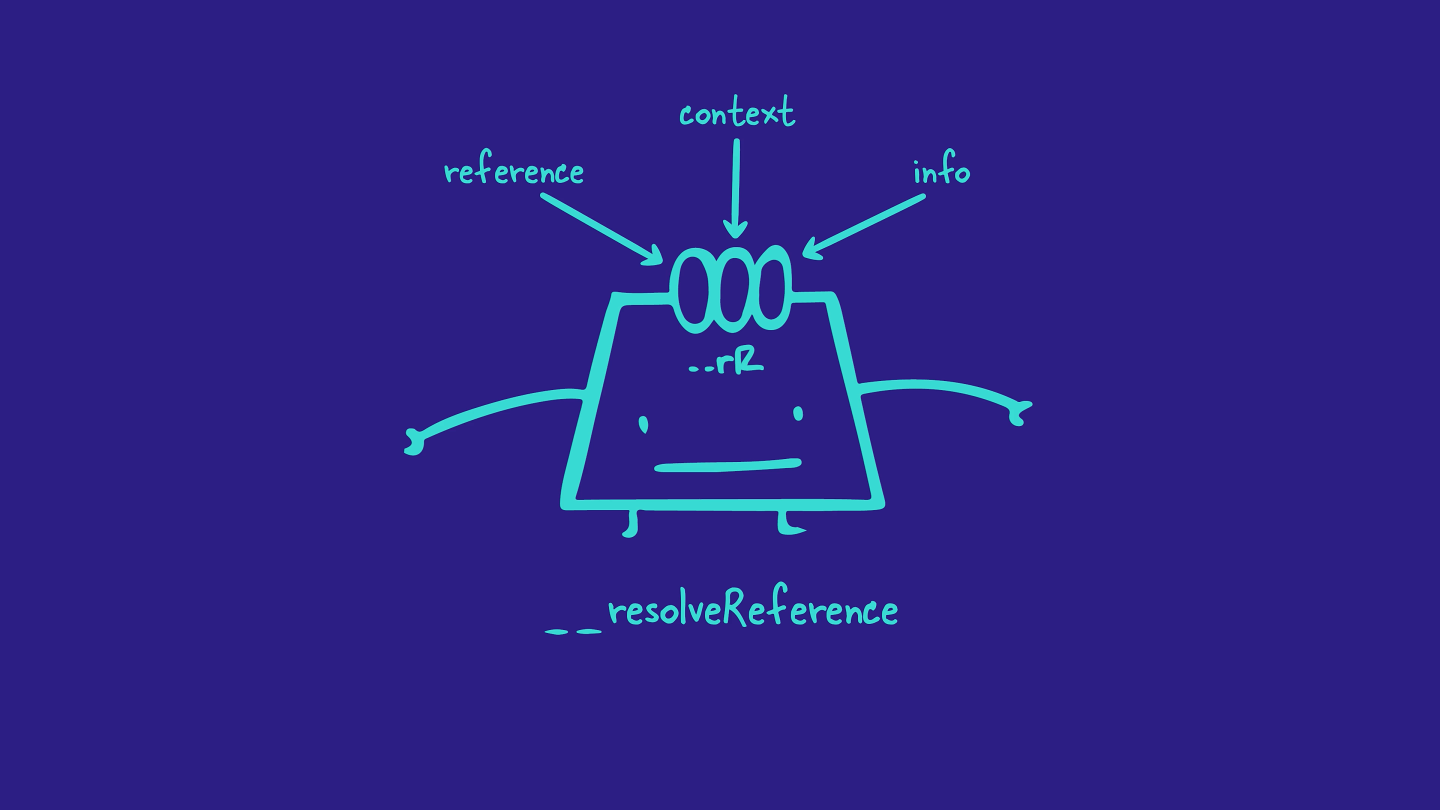
Let's focus on this first argument, reference, and learn more about entity representations.
What's an entity representation?
An entity representation is an object that the router uses to represent a specific instance of an entity. A representation always includes the typename for that entity and the @key field for the specific instance.
- The
__typenamefield: This field exists on all GraphQL types automatically. It always returns the name of its containing type, as a string. For example,Location.__typenamereturns "Location". - The
@keyfield: The key-value pair that a subgraph can use to identify the instance of an entity. For example, if we defined theLocationentity using the "id" field as a primary key, then our entity representation would include an "id" property with a value like "loc-2".
An entity representation for a location might look like this:
{"__typename": "Location","id": "loc-2"}
You can think of an entity representation as a passport that the router uses to refer to a particular object between subgraphs.
The typename field is like a passport's country of origin. It says which entity the object belongs to. And the @key field is like a passport's ID number, uniquely identifying this instance of that entity.
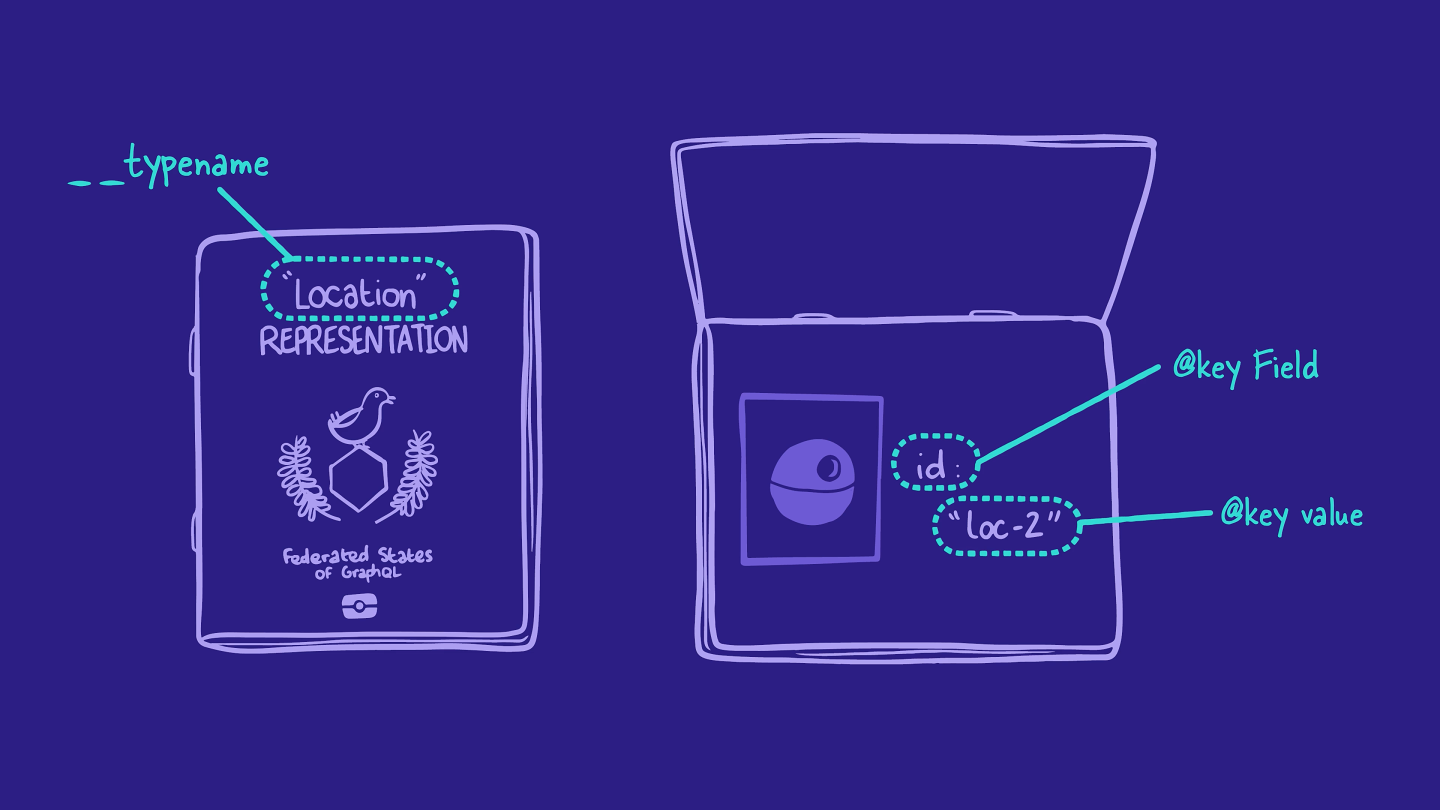
Practice
__resolveReference function be defined?Drag items from this box to the blanks above
router
@primaryreference resolver
subgraph
@keykeys
more than one
@uniqueonly one
fields
Key takeaways
- An entity is a type that can resolve its fields across multiple subgraphs.
- To create an entity, we can use the
@keydirective to specify which field(s) can uniquely identify an object of that type. - We can use entities in two ways:
- As a return type for a field (referencing an entity).
- Defining fields for an entity from multiple subgraphs (contributing to an entity).
- Any subgraph that contributes fields to an entity needs to define a reference resolver function for that entity. This
__resolveReferenceresolver is called whenever the router needs to access fields of the entity from within another subgraph. - An entity representation is an object that the router uses to represent a specific instance of an entity. It includes the entity's type and its key field(s).
Up next
We've covered a lot about entities! In the next lesson, we'll jump back into the code for our subgraphs and define our first entity.
Share your questions and comments about this lesson
Your feedback helps us improve! If you're stuck or confused, let us know and we'll help you out. All comments are public and must follow the Apollo Code of Conduct. Note that comments that have been resolved or addressed may be removed.
You'll need a GitHub account to post below. Don't have one? Post in our Odyssey forum instead.